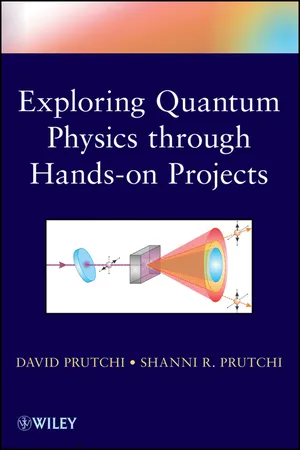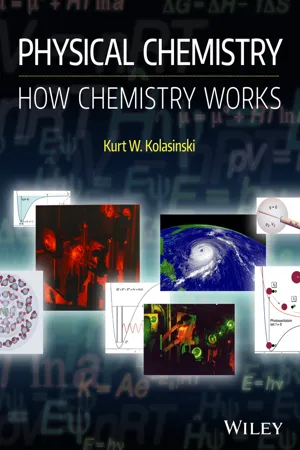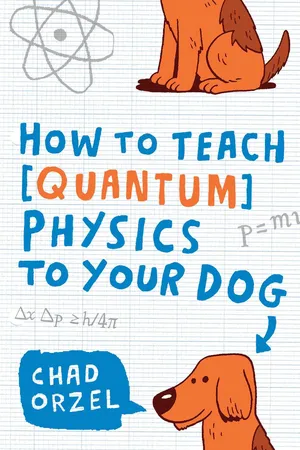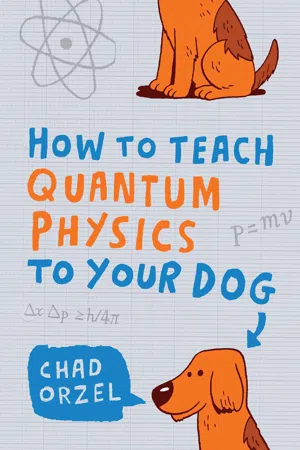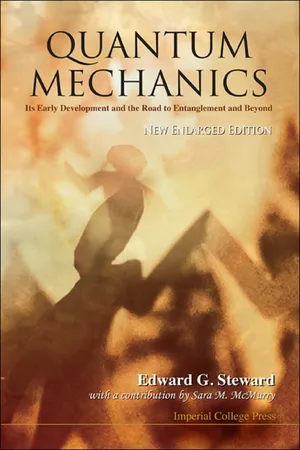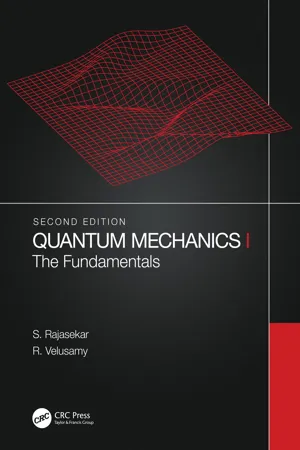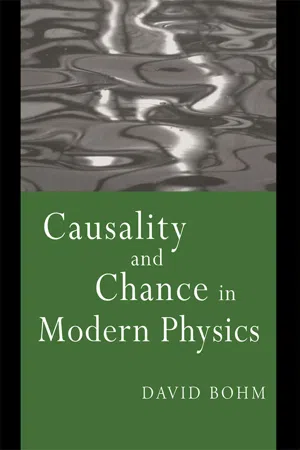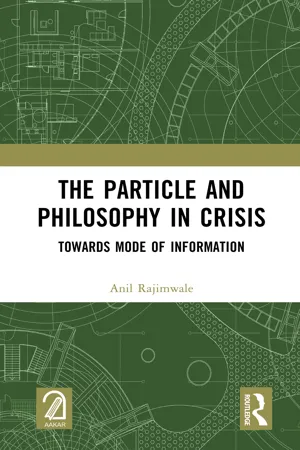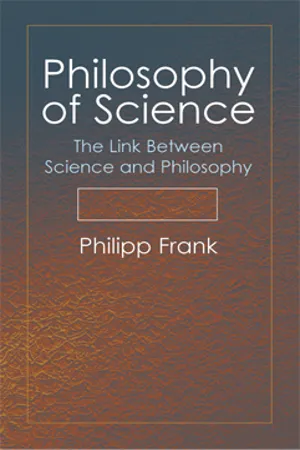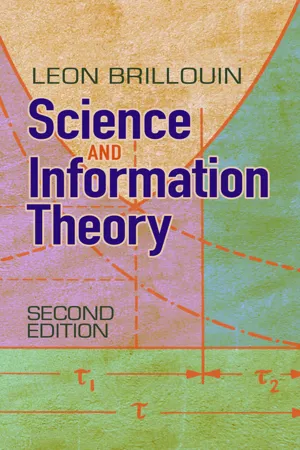Chemistry
Heisenberg Uncertainty Principle
The Heisenberg Uncertainty Principle states that it is impossible to simultaneously know both the exact position and momentum of a particle. In the context of chemistry, this principle has implications for the measurement and understanding of atomic and subatomic particles. It fundamentally challenges the idea of precise measurement at the quantum level.
Written by Perlego with AI-assistance
Related key terms
Related key terms
1 of 4
Related key terms
1 of 3
12 Key excerpts on "Heisenberg Uncertainty Principle"
- David Prutchi(Author)
- 2012(Publication Date)
- Wiley(Publisher)
symbol means in other books and papers on quantum physics.Heisenberg’s Uncertainty Principle was published in a 1927 paper that argued why the position and momentum of a particle cannot both be measured exactly, at the same time, even in theory. For Heisenberg, and later for the whole physics society centered on Bohr’s Copenhagen school, the very concepts of exact position and exact momentum together, in fact, had no meaning in nature.Please note that the uncertainty in the measurement of either position or momentum is not due to lack of accuracy of our measurement instruments. The compromise in the measurements happens in principle, as a law of nature. That is, even if your measurement instruments are infinitely precise, you cannot simultaneously know the position and momentum of a particle with absolute precision. For this reason, some people prefer to call this concept the Indeterminacy Principle, so that the intrinsic indeterminate character of nature is implied.Notice, however, that the limitation is in the order of magnitude of Planck’s constant h. In fact, since we are dividing it by 4π, it is one order of magnitude lower than Planck’s constant. This means that the Uncertainty Principle doesn’t really affect our everyday experience, in which momentum is so much larger than Planck’s constant.EXPERIMENTAL DEMONSTRATION OF THE UNCERTAINTY PRINCIPLE
A demonstration of the Uncertainty Principle is simple to conduct using a laser pointer and an adjustable slit consisting of two razor blades. The idea is that the photons emitted by the laser travel without diverging. As shown in Figure 104 , the photons exiting the laser can be assumed to have momentum only along the x axis (so py- eBook - ePub
Physical Chemistry
How Chemistry Works
- Kurt W. Kolasinski(Author)
- 2016(Publication Date)
- Wiley(Publisher)
However, there are certain questions regarding incompatible observables about which our knowledge is limited. A much better name would be the ‘indeterminacy principle.’ The Heisenberg relations and the Schrödinger equation define which questions can be determined exactly and which have approximate answers. The uncertainty principle is not an assumption. Rather, it is a direct consequence of the postulates of quantum mechanics, in particular the statistical interpretation inherent in the Born rule and the definition of expectation values. The most general form of the uncertainty principle is written in terms of the expectation value of the commutator (20.85) for any pair of operators whose commutator comprises an operator of the form (20.86) Is the strange behavior observed for an electron (that the measurement perturbs the object of measurement) but not for a snooker ball (or other macroscopic object) a property of measurement or a property of the particle itself? We have already encountered this question in Section 19.5.1. The answer in quantum mechanics is both. Measurement interactions affect the particle and the accuracy of the measurement – even for macroscopic particles such as the roughly 10 kg objects that are to be used to measure gravitation waves 19. However, the collapse of the wavefunction by the interaction of the particle with the environment is also a fundamental property of the particle and the basis of one of the postulates of quantum mechanics 20. 20.10.3 Position–momentum uncertainty relationship Assume that we have a particle in a state described by the wavefunction (20.87) where a is a normalization constant and 0 ≤ x ≤ ∞. Let us determine the expectation value of the commutator of the position and momentum operators so as to derive their uncertainty relation. The position and momentum operators are and - eBook - ePub
- Chad Orzel(Author)
- 2009(Publication Date)
- Scribner(Publisher)
She trots over to the TV, and sticks her nose under the cabinet. “Oooh! Here’s my bone!” She paws at it for a minute, and eventually succeeds in knocking it out from under the cabinet. “I have a bone!” she announces proudly, and begins chewing it noisily, the uncertainty principle forgotten.The Heisenberg Uncertainty Principle is probably the second most famous result from modern physics, after Einstein’sE = mc2(the most famous result from relativity). Most people wouldn’t know a wavefunction if they tripped over one, but almost everyone has heard of the uncertainty principle: it is impossible to know both the position and the momentum of an object perfectly at the same time. If you make a better measurement of the position, you necessarily lose information about its momentum, and vice versa.In this chapter, we’ll describe how the uncertainty principle arises from the particle-wave duality we’ve already discussed. The uncertainty principle is often presented as a statement that a measurement of a system changes the state of that system, and in this form, references to quantum uncertainty turn up in all sorts of places, from politics to pop culture to sports.* Ultimately, though, uncertainty has very little to do with the details of the measurement process. Quantum uncertainty is a fundamental limit on what can be known, arising from the fact that quantum objects have both particle and wave properties.Uncertainty is also the first place where quantum physics collides with philosophy. The idea of fundamental limits to measurement runs directly counter to the goals and foundations of classical physics. Dealing with quantum uncertainty requires a complete rethinking of the basis of physics, and leads directly to the issues of measurement and interpretation in chapters 3 and 4. - eBook - ePub
- Chad Orzel(Author)
- 2010(Publication Date)
- Oneworld Publications(Publisher)
She trots over to the TV, and sticks her nose under the cabinet. “Here’s my bone!” She paws at it for a minute, and eventually succeeds in knocking it out from under the cabinet. “I have a bone!” she announces proudly, and begins chewing it noisily, the uncertainty principle forgotten.The Heisenberg Uncertainty Principle is probably the second most famous result from modern physics, after Einstein’s E = mc2 (the most famous result from relativity). Most people wouldn’t know a wavefunction if they tripped over one, but almost everyone has heard of the uncertainty principle: it is impossible to know both the position and the momentum of an object perfectly at the same time. If you make a better measurement of the position, you necessarily lose information about its momentum, and vice versa.In this chapter, we’ll describe how the uncertainty principle arises from the particle-wave duality we’ve already discussed. The uncertainty principle is often presented as a statement that a measurement of a system changes the state of that system, and in this form, references to quantum uncertainty turn up in all sorts of places, from politics to pop culture to sports.* Ultimately, though, uncertainty has very little to do with the details of the measurement process. Quantum uncertainty is a fundamental limit on what can be known, arising from the fact that quantum objects have both particle and wave properties.Uncertainty is also the first place where quantum physics collides with philosophy. The idea of fundamental limits to measurement runs directly counter to the goals and foundations of classical physics. Dealing with quantum uncertainty requires a complete rethinking of the basis of physics, and leads directly to the issues of measurement and interpretation in chapters 3 and 4 - eBook - ePub
Quantum Mechanics
Its Early Development and the Road to Entanglement and Beyond
- Edward G Steward(Author)
- 2011(Publication Date)
- ICP(Publisher)
§9.1 .It is necessary to emphasise that the Uncertainty Principle is not merely a result of practical limitations in making measurements of, say, p and q. It is only when one property is observed/measured that that property becomes definite, and similarly for the other: unobserved, the particle has no definite p or q.A simple way (Bohr 1927, 1928) of approaching the Uncertainty Principle, on the wave–particle basis, is to consider a wavepacket representing a mass particle. Let the wave-packet have length Δq. This then represents the uncertainty in determining the exact position of the associated particle. Its length is proportional to the associated wavelength range, Δλ say, comprising the wave-packet, and from the Bandwidth Theorem, we haveNow Δλ also relates to the uncertainty in evaluating the momentum of the particle, since de Broglie’s Eqn. 7.16 tells us thatTherefore, Thus, like Bohr, we arrive at Eqn. 9.3,In his paper, Heisenberg went on to consider other things such as the path, velocity, and energy of an electron. For example, he considered the concept of an electron orbit in an atom. By ‘electron orbit’ he said, “we mean a series of points at which the electron occupies one after another as ‘position’ ”. However, illumination of a sufficiently short wavelength to ‘measure’ the orbit would result in the ejection of the electron from its orbit: any sense of orbit would be lost in the process of observing it. The only way of ‘detecting’ the whole orbit would be to envisage making repeated measurements on a single atom — or, more realistically, measurements on an ensemble of the atoms. This would amount to a probability distribution function for the position of the electron, and here Heisenberg was acknowledging its relationship to Born’s probability interpretation of the Schrödinger wave function — adding to Heisenberg’s alienation from Bohr. At each ‘measurement’ there is what became known as a ‘collapse’ of the wave function Ψ (cf. §7.3.9 - Volodymyr Krasnoholovets(Author)
- 2017(Publication Date)
- Apple Academic Press(Publisher)
p ) . An experimenter cannot know both the position and the momentum at the same moment in time. Heisenberg noted that a selection from an abundance of possibilities takes place in quantum systems, which also puts a limitation on future outcomes. Heisenberg worked with a broadened wave packet with calculable probability-a typical approach to the description of quantum systems.Later on Kennard [128 ] derived a different formulation of the uncertainty principle, which was later generalized by Robertson [129 ]: σ (q )σ (p ) ≥ h /(4π ), i.e., one cannot suppress quantum fuctuations of both position σ (q ) and momentum σ (q ) lower than a certain limit simultaneously. The fuctuations exist within themselves without respect to whether the position q and the momentum p of the quantum system are measured or not. This inequality cannot foresee any behavior of the parameters q and p at the time of measurement. Nowadays it seems that Kennard’s formulation of the uncertainty principle is more oft en used.Other authors deriving the uncertainty relation(3.5)Δ x Δ p ≥1 2ħbased their consideration on the behavior of a wave packet of finite length (see, e.g., Fermi [130 ] who referred to the proof conducted by E. Persico — see Engl. translation: Persico, E. (1950), Fundamentals of Quantum Me chanics , Prentice-Hall, New York) or the representation of the wave ψ -function as a superposition of plane waves corresponding to the discrete spectrum (Born [90 ], p. 383), and so on.In such a manner the uncertainty principle is considered as a corollary of the wave-particle duality of nature when a canonical particle is called a wave-particle and then all the characteristics of classical waves are automatically attributed to the particle. However, a wave packet is not stable and dissipates over time. Hence the description of a particle by using a wave packet is an approximate description. De Broglie [111 ] in his book devoted to the uncertainty principle analyzed this topic as well as the principle of spectral expansion in detail. He showed that the uncertainty relation (3.5 ) is due to: (i) the attribution of a wave function ψ- eBook - ePub
Quantum Mechanics I
The Fundamentals
- S. Rajasekar, R. Velusamy(Authors)
- 2022(Publication Date)
- CRC Press(Publisher)
5.3 ×10m. According to quantum mechanics this value is the most probable radius. This means in experiment, most trials will give a different value, larger or smaller than− 115.3 ×m.10− 11- An important implication of the uncertainty principle is that quantum systems do not follow classical trajectories which conflict with our everyday experience.
Another consequence is that quantum mechanical systems in their lowest energy state (ground state) could not be at rest. For example, the electron of an atom in its ground state could not be at rest. What will happen if it is at rest? In this case its velocity is exactly known to be zero and its position would be known precisely. This would violate the Heisenberg uncertainty relation.Supposeψ ( x )is a delta-function atx =. The position of the particle is determined exactly. What about the corresponding momentum wave function? The momentum wave functionx 0C ( k )is a sinusoidal function extending over all space. Thus, the momentum uncertainty is infinity. Similarly, ifψ ( x )is sinusoidal then the position uncertainty is infinity whereas because the corresponding momentum wave function is delta-function the uncertainty in momentum is zero.It gives a resolution limit for the determination of the spectrum of a signal in terms of the measurement [7 ]. It also states resolution limits for imaging systems in terms of their aperture size. It serves as the basis of one of the standard measure of laser beam quality [8 ]. The uncertainty principle indicates the existence of quantum fluctuations in physical states that cannot be controlled completely. Particularly, the fluctuations of energy and momentum go arbitrarily large when the space-time interval becomes shorter and shorter.The interaction between two particles occurs by means of exchange of a quantum of the interacting field. For example, Yukawa's strong nuclear force between nucleons is due to the exchange of pions. The mass of the exchanged quantum is found to have an inverse relation with the range of the interaction. This can be accounted only by the uncertainty relation. If R is the range and m - eBook - ePub
- David Bohm(Author)
- 2004(Publication Date)
- Routledge(Publisher)
Indeed, the general point of view of Heisenberg (and of most of the proponents of the usual interpretation of the quantum theory) is that future developments in physics will, if anything, be in the direction of making the behaviour of things even less precisely definable than is possible in terms of the current quantum theory, * so that the current form of the quantum theory sets a limit to the precision of all possible measurements which, in any case, could certainly not be exceeded. 5. RENUNCIATION OF CAUSALITY IN CONNECTION WITH THE ATOMIC DOMAIN A CONSEQUENCE OF THE INDETERMINACY PRINCIPLE The indeterminacy principle raised a number of important new philosophical questions not appearing in classical mechanics. These questions helped to lead physicists, as we shall see, to renounce the concept of causality in connection with the atomic domain, and thus to adopt a very different philosophical point of view from that which had prevailed up to the advent of the modern quantum theory. To appreciate the rôle that the indeterminacy principle played in helping to bring about a renunciation of causality, let us recall that in classical mechanics it is just the initial values and initial rates of change of all the mechanical variables defining the state of a given system that determine the future motions of the system in question. According to the indeterminacy principle, however, there exists a fundamental limitation, arising from the very laws of nature at the quantum-mechanical level, which is such that we are unable to obtain the data needed to specify completely the initial values of the various parameters that determine the behaviour of such a mechanical system. Of course, one might assume that the indeterminacy in the position and the momentum of the electron is a consequence of the fact that these variables, which after all are suggested only by the extrapolation of classical physics to the atomic domain, are not a complete description of the electron - eBook - ePub
The Particle and Philosophy in Crisis
Towards Mode of Information
- Anil Rajimwale(Author)
- 2022(Publication Date)
- Routledge(Publisher)
41The accurate determination the position of the electron requires the use of light of short wavelength. This involves transfer of a large but unpredictable and uncontrollable momentum to the electron. On the other hand, an accurate determination of the momentum requires light quanta of very low momentum, and therefore long wavelength.42Can one use means other than interaction with light quanta to observe the electron? A beam of electrons can be substituted for the beam of light quanta. But the situation does not change essentially. All energy comes in quanta, and all matter has the properties of both wave and particle. Therefore, the indeterminacy principle will continue to operate.Heisenberg considers indeterminacy as one of the basic laws of nature, to which all other laws will have to correspond. It would have an absolute and final validity, which will continue indefinitely. The future developments in physics will be in the direction of less and less precise determination of the behaviour of particles and ‘things’ and processes.43 For example, Heisenberg even proposed that for the distances shorter than the ‘fundamental length’ of the order of 10−13 cm, even the properties of time and space would cease to éxist’ (to be definable).44A Discussion on Electron, ‘Particle’ and Existence
It is apparent from the above discussion that any attempt to locate particle beyond a certain limit, leads to complexities, problems and uncertainties. Our traditional, existing concept of the particle is shattered. We are accustomed to delimit, determine a well-defined object as the object of our analysis. A particle, a sphere, a tangible, solid unit is almost always, and basically, the very basis of our observation, interpretation and worldview. It has been the very basis of philosophy - eBook - ePub
Philosophy of Science
The Link Between Science and Philosophy
- Philipp Frank(Author)
- 2013(Publication Date)
- Dover Publications(Publisher)
9 The New Language of the Atomic World 1. Heisenberg’s Uncertainty Relation 1 The laws of motion for small particles are formulated 2 in such a way that they connect observable initial conditions with observable results; the laws say nothing about “moving” particles. The scientist has always felt the need for retaining the traditional laws of motion as long as possible. They have been absorbed by our common-sense language, and it is certainly very helpful to use this same language as much as possible. In using common-sense language, the imagination of the scientist works with more ease and detachment than in using an abstract language where every result must be found by step-by-step formal reasoning. If we again consider the swarm of particles passing through the diaphragm through two slits S 1 and S 2, we can describe the situation in the following way: A wave passes through both slits and produces interference on the other side. To say that one particle passes through both slits would be an odd way to speak about a small particle ; therefore, one would do better to say that the particle passes through the diaphragm, but that the exact location of its passing is described by an uncertainty a because the distance between the slits through which it passes is a. In Newtonian mechanics, the initial conditions of motion are the position (coordinate) and velocity (or momentum). If these data are given, we can predict the future motion from Newton’s laws of motion - eBook - ePub
Science and Information Theory
Second Edition
- Leon Brillouin(Author)
- 2013(Publication Date)
- Dover Publications(Publisher)
CHAPTER 16 INFORMATION THEORY, THE UNCERTAINTY PRINCIPLE, ANDPHYSICAL LIMITS OF OBSERVATION 1. General RemarksWe have discussed a variety of experiments, and we have obtained a general result : the negentropy principle of information, which says that any information resulting from a physical observation must be paid for by an increase in entropy in the laboratory. On the average, this entropy increase is larger than the information obtained when both quantities are measured in the same system of units. These conditions represent a new limitation on the possibilities of observation, and we want to compare it with the well known uncertainty relations.There has been a great deal of discussion, during the last half century, on the relations between classical physics and quantum physics. The original point of view of N. Bohr, expressed in his principle of “complementarity” ‘ and his interpretation of the uncertainty relations, seems to remain the sound and logical approach to the problem. Recent discussions1 have clearly emphasized the importance of the questions involved. Physics starts, historically and actually, on the classical level, with experiments made at the human scale, and fundamental definitions (length, time, mass, general laws) based on these experiments. From this solid ground, the physicist proceeds to the investigation of atomic problems and discovers the quantum conditions, with all the limitations involved in the uncertainty principle, and wave mechanics. Consistency requires that these new laws should, in the limit of very large quantum numbers, reduce to classical laws. Bohr emphasized repeatedly the fact that a measuring apparatus is always described in classical terms, but he also introduced the “correspondence principle,” according to which quantum laws must lead to classical laws in the limit, when Planck's constant h - M.B Mensky(Author)
- 2017(Publication Date)
- CRC Press(Publisher)
9.12 ).The principal distinctions of this new uncertainty principle from the Heisenberg uncertainty relation should be emphasized. The latter restricts the variance of outputs of two different measurements (for example of position and momentum). But the output of a continuous measurement contains information about both position and momentum (or any other pair of conjugate observables). Therefore some restriction should arise on the variance of outputs of this measurement alone. This restriction is expressed by AUP. It turns out that (in the quantum regime of measurement) the more accurate the continuous measurement, the more its outputs can differ from those predicted by classical theory, as can be seen from equation (9.12) .The qualitative consequences of this principle arising in a typical situation can be formulated as follows:1. For a rough measurement (when the error of the measurement is large and the sets α wide) only those measurement outputs are probable which are predicted by classical theory. This is a classical regime of measurement.2. For a fine measurement (when the error is small and the sets α narrow) even those measurement outputs that are far from classical predictions are probable. The more precise the measurement, the wider is the range of probable measurement outputs (this may be called quantum measurement noise). This is a quantum regime of measurement.3. The optimal regime lies between the classical and quantum regimes of measurement. Rougher measurements are inefficient because of classical measurement errors. Finer measurements are inefficient because of the quantum measurement noise.This leads to an absolute restriction on the measurability of the corresponding observable. This restriction cannot be overcome by the choice of the measuring device for the same type of measurement. One can, however, choose the type of measurement or the observable to be measured in such a way that an absolute restriction does not arise. In this case the observable and the measurement are called quantum nondemolition (QND). For any such measurement there is in fact no quantum regime of measurement.
Index pages curate the most relevant extracts from our library of academic textbooks. They’ve been created using an in-house natural language model (NLM), each adding context and meaning to key research topics.
Explore more topic indexes
Explore more topic indexes
1 of 6
Explore more topic indexes
1 of 4
